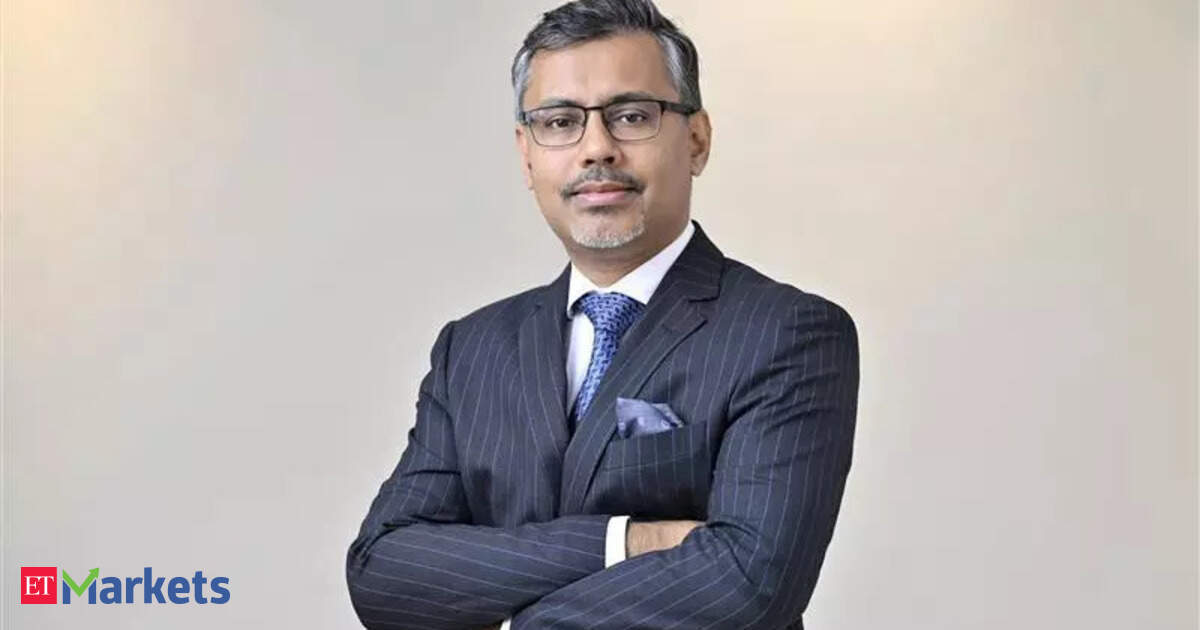This wave of equity supply, driven by both private equity exits and fresh fundraising by Indian corporates, is likely to test the market’s appetite and resilience.
According to Gautam Sinha Roy, Chief of Equity and Fund Manager at ICICI Prudential Life Insurance, while the surge in IPOs signals confidence in India’s economic story, it also raises questions about valuation sustainability and the market’s ability to absorb this scale of issuance without disrupting ongoing bullish trends.
Roy believes that investor selectivity and earnings delivery will be key as this flood of new paper hits the market. Edited Excerpts –
Q) The second half of 2025 started on a volatile note. How are you looking at the markets? One of the reasons could be FIIs selling, which continues in July.
A) Markets have seen some volatility in the last year due to a transient domestic slowdown and more importantly global uncertainties (tariffs, geopolitical conflicts).
Yet the medium-to-long term outlook remains positive due to stable macro conditions, economic recovery from the transient slowdown; augmented by strong retail flows.
Positive U.S. data has sparked expectations of US Federal Reserve cutting the interest rate in early 2026. Foreign Institutional Investors (FIIs) selling indicates caution and a shift to other emerging markets.
Significant equity supply from promoters and private equity firms ($20bn+ FYTD, after $60bn in FY25) has reigned the market in a tight band. Further upside shall be limited by increasing valuations amidst continued supply of stock from promoters and private equity.
Q) IPOs have picked up recently, but EY report highlighted that Indian IPO activity in the first half of 2025 recorded 108 deals raising US$4.6b, demonstrating market resilience despite a 30% decline in transactions.
A) IPOs and other secondary market offerings continue to be strong, having raised over ~$20 bn so far in FY26, with a strong pipeline of companies across diverse sectors such as financials, tech and renewables seeking to raise over ~$50 bn through the coming year.Strong retail inflows are helping absorb this supply which has led to heightened activity in both the primary and secondary markets. We expect this phenomenon to continue, restricting strong upsides to market levels.
Q) What is the initial sense you are picking up from the June quarter results, which have started to come out?
A) Overall, the Q1-FY26 earnings season has shown positive traction, with an over 10% year-over-year growth in aggregate earnings so far, meeting expectations.
The two largest private banks and the oil & gas major have delivered healthy double-digit earnings growth, whereas large IT service companies’ earnings continue to be muted as expected.
Several sectors such as Cement, Metals, Hospitality, Retail, Hospitals and Speciality Chemicals are also expected to deliver good earnings growth.
Q) Is the current equity market rally largely liquidity-driven, or are there sufficient earnings fundamentals to back the optimism?
A) It’s a combination of both. The current equity rally is supported by strong domestic liquidity, with retail inflows at record highs. The governments spend on infrastructure, social support and tax incentives are supporting growth.
The earnings trajectory, after seeing a dip last year, is showing some strength again. The RBI’s pro-growth stance should drive credit led growth later this year.
India Inc’s balance sheet continues to be healthy. Continued earnings recovery in H2-FY26 will be necessary for the markets to remain buoyant.
Q) How is the corporate bond market shaping up here in India?
A) The Indian corporate bond market has seen strong growth, reaching record annual issuances of ₹9.5 trillion and growing at 13% CAGR over two years. This was driven by a 100-bps rate cut which was transmitted faster than in banks.
While most borrowing was for working capital, the market is expected to remain active due to rising private capital expenditures, strong interest in REITs, InvITs and asset monetization, demand for lower-rated papers and the RBI’s accommodative stance.
Q) Where are the pockets of opportunities coming from?
A) We note that the market rally in the last three years has been very broad-based, with most sectors participating. Going forward, we believe that we will have to be more selective.
Pockets of opportunity are emerging in select sectors and themes despite broader market concerns. Large financials offer good value with improving growth prospects. Discretionary remains a key overweight, with expectations of a consumption revival in H2-FY26 driven by monetary easing, a favourable base and possible tax cuts.
Healthcare is another area of opportunity, with strong growth visibility across hospitals and pharma companies. Within Industrials, specific plays like aviation and electronics manufacturing offer structural long-term growth, driven by rising affluence, localization and policy support.
Q) How should one play the small & midcap space?
A) Small and midcaps have outperformed, but valuations continue to be demanding, making a selective, fundamentals-driven approach essential. The focus should be on earnings visibility, cash flows, management quality while avoiding overhyped IPOs that lack fundamental strength.
Many of the small & midcap companies are prone to be driven by narratives alone. We evaluate companies more on a bottom-up approach, to assess their business strengths and prefer companies with strong fundamentals, healthy balance sheets and leadership in emerging and scalable spaces, available at fair valuations.
In the mid/small cap segment, we currently find opportunities in select financiers, consumer durables, affordable housing financiers, mid-sized renewable power producers, healthcare, hospitality, mid-sized internet and IT companies.
(Disclaimer: Recommendations, suggestions, views, and opinions given by experts are their own. These do not represent the views of the Economic Times)







